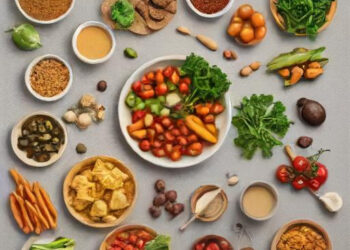Researchers have identified up to 9,936 different chemicals in a single plastic food package. Plastic is a very complex material that can contain many different chemicals, some of which can be harmful. This also applies to plastic food packaging.
“We found as many as 9936 different chemicals in a single plastic product used as food packaging,” said Martin Wagner, a professor at the Norwegian University of Science and Technology (NTNU’s) Department of Biology.
Wagner has worked with chemicals in plastic products for many years. He is a member of the NTNU research team that has just released their findings in the journal Environmental Science and Technology. The lead authors of both studies are PhD students Molly McPartland and Sarah Stevens from NTNU.
A study was conducted by researchers on 36 different plastic products used in food packaging. These products came from five countries; USA, UK, South Korea, Germany and Norway.
“In most of these plastic products, we found chemicals that can affect the secretion of hormones and metabolism,” Wagner said. These traits are necessary. Hormones are the body’s messengers. They are secreted by several different glands and allow different organs to communicate with each other .Metabolism is the body’s utilization of nutrients to produce energy and necessary substances for its proper functioning. It involves more than one metabolic process..
Another study involved the use of various plastic chemical mixtures to investigate their potential impact on receptors that are associated with G proteins. The researchers found These receptors play an important role in the transmission of signals in the body.
“We identified 11 chemical combinations from plastic products that affect these signal receptors,” says Associate Professor Wagner. New methods for modulating signal transmission in the body have been developed by scientists using chemical mixtures.
“These and previous findings show that plastic exposes us to toxic chemicals. They support the theory that we need to redesign plastic to make it safer,” Wagner said.
References:
“Plastic Food Packaging from Five Countries Contains Endocrine- and Metabolism-Disrupting Chemicals” by Sarah Stevens, Molly McPartland, Zdenka Bartosova, Hanna Sofie Skåland, Johannes Völker and Martin Wagner, 5 March 2024, Environmental Science & Technology.
DOI: 10.1021/acs.est.3c08250
“Beyond the Nucleus: Plastic Chemicals Activate G Protein-Coupled Receptors” by Molly McPartland, Sarah Stevens, Zdenka Bartosova, Ingrid Gisnås Vardeberg, Johannes Völker and Martin Wagner, 5 March 2024, Environmental Science & Technology.
DOI: 10.1021/acs.est.3c08392
The study was funded by the European Union’s Horizon 2020 research and innovation program.







